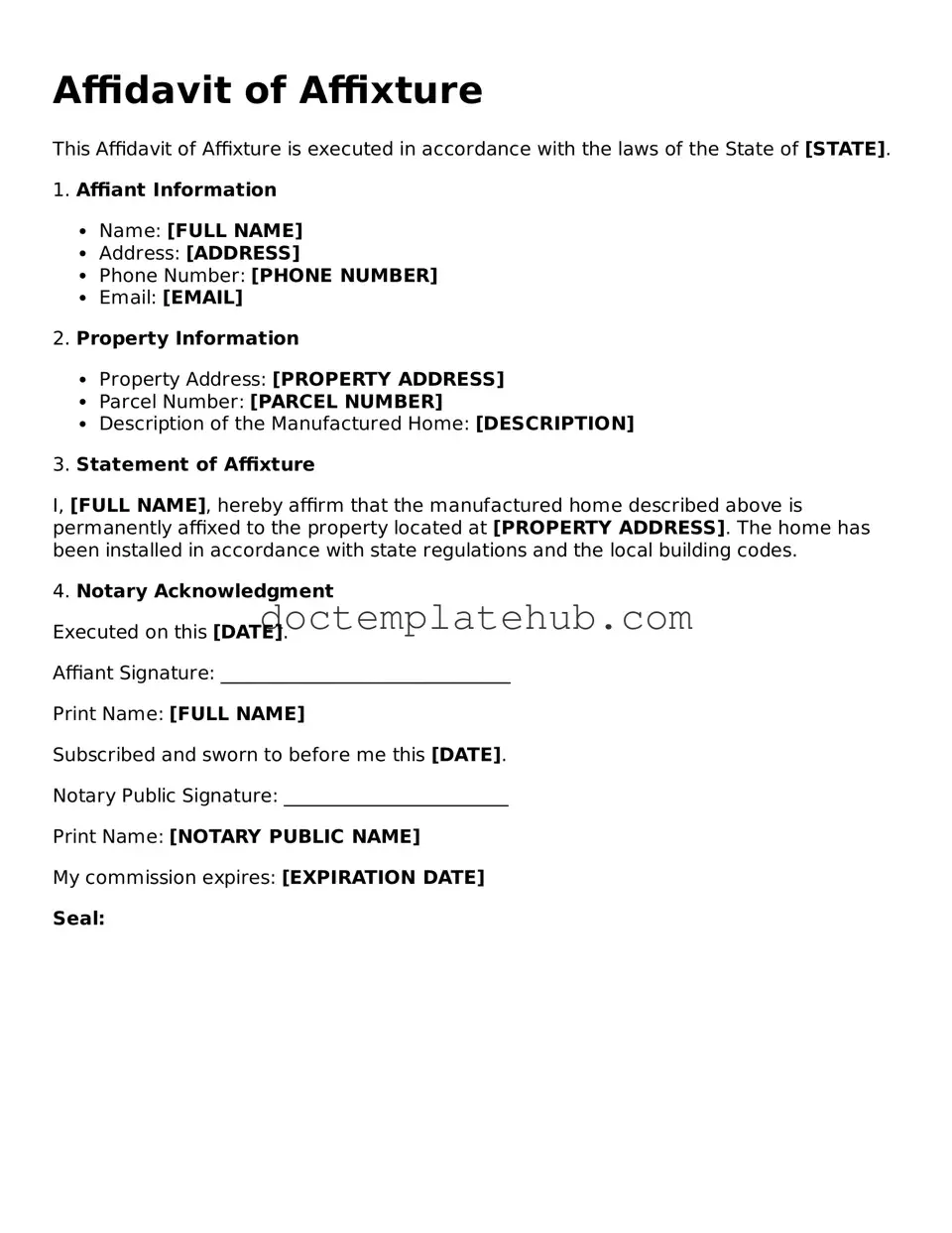The Affidavit of Affixture form plays a crucial role in the world of real estate, particularly when it comes to mobile homes and manufactured housing. This document serves as a declaration that a mobile home has been permanently affixed to a piece of land, transforming it from personal property into real property. By completing this form, homeowners can ensure that their mobile home is legally recognized as part of the real estate, which can simplify the buying, selling, or refinancing process. The form typically requires essential information, such as the property owner's details, the legal description of the land, and specifics about the mobile home, including its make, model, and identification numbers. Additionally, the Affidavit of Affixture must be signed in the presence of a notary public, adding an extra layer of authenticity to the document. Understanding this form is vital for anyone involved in the ownership or transaction of mobile homes, as it helps clarify property rights and responsibilities.
